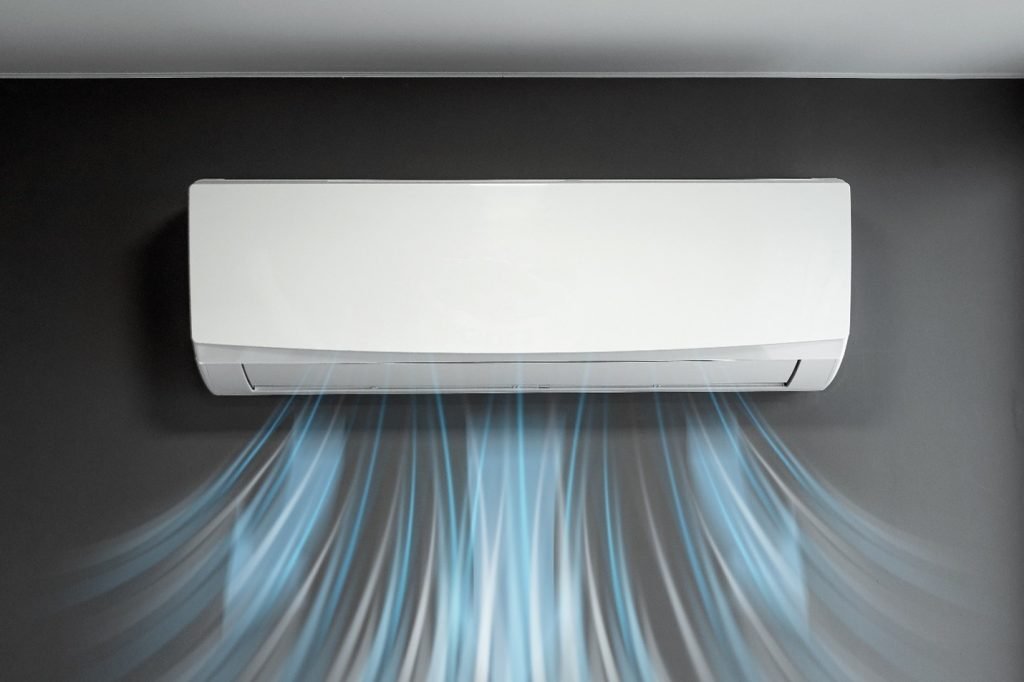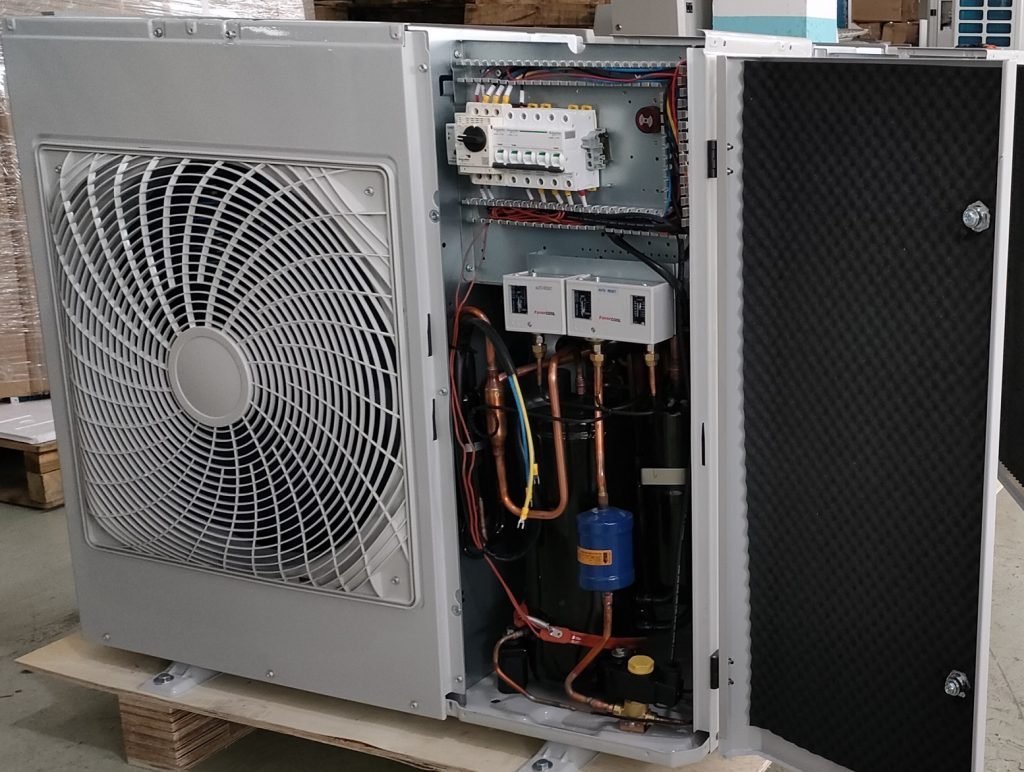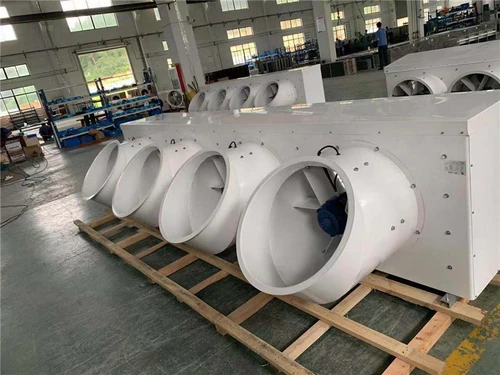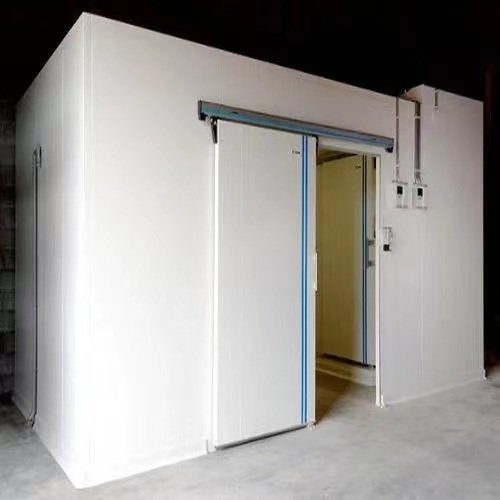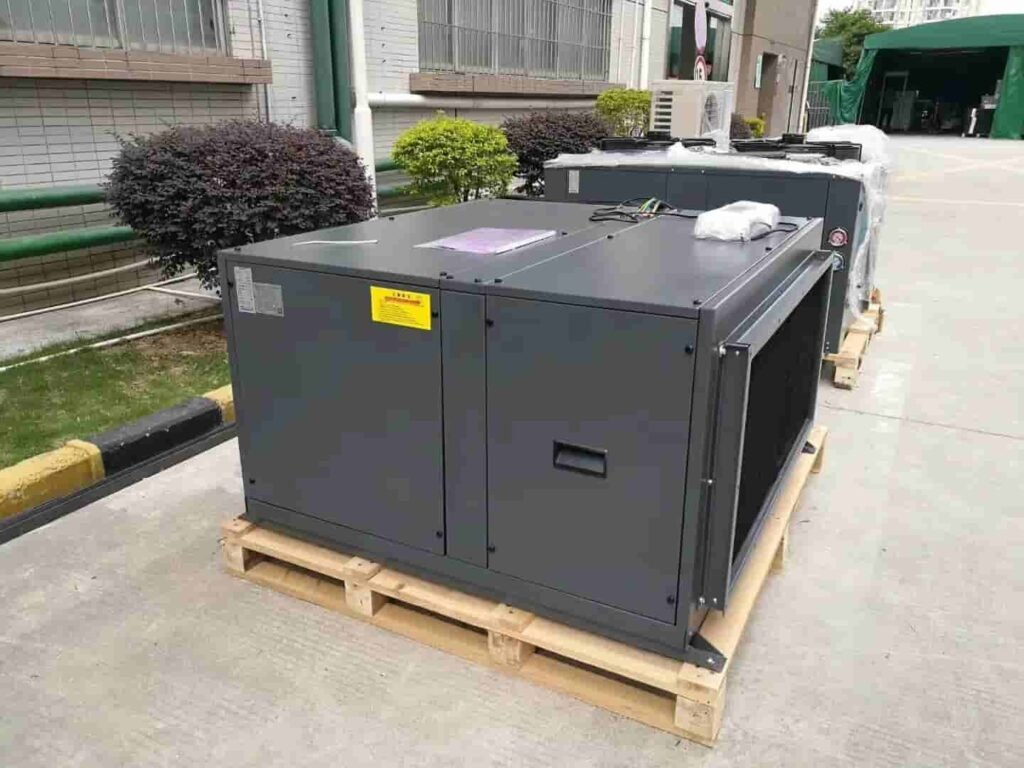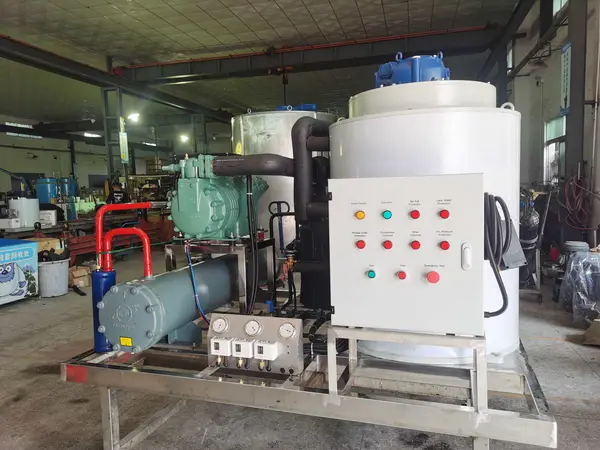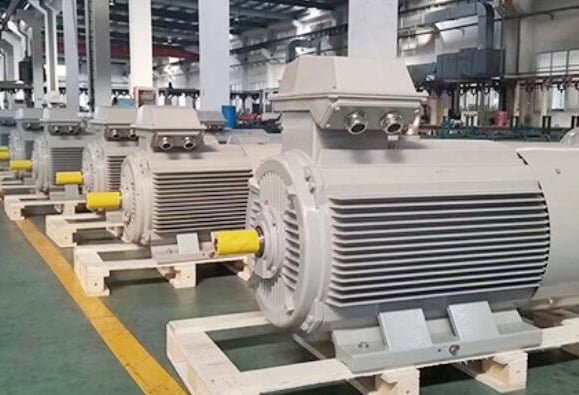Qu'est-ce que l'isolation des tuyaux en cuivre
L'isolation du tuyau en cuivre fait référence au processus d'emballage des matériaux d'isolation thermique autour des tuyaux en cuivre pour minimiser la perte de chaleur ou le gain. Ceci est essentiel pour maintenir la température ambiante, Amélioration de l'efficacité énergétique, et protéger les tuyaux des dommages environnementaux. Il est particulièrement pertinent pour les systèmes de plomberie résidentielle et commerciale, Surtout dans le chauffage, refroidissement, et applications de distribution de l'eau.
Pourquoi ça compte
Les tuyaux en cuivre isolants peuvent réduire les coûts de chauffage en réduisant la perte de chaleur, protéger contre les dommages causés par les tuyaux contre le gel, et prolonger la durée de vie des tuyaux en empêchant la corrosion. Par exemple, Les études montrent que les conduites d'isolation d'eau chaude peuvent économiser 5% sur les factures de chauffage de l'eau en permettant des réglages de thermostat inférieurs (Projet d'épargne à faire soi-même: Isoler les conduites d'eau chaude). Cependant, dans des espaces bien isolés ou des tuyaux courts, Les avantages pourraient être minimes, et une mauvaise installation pourrait piéger l'humidité, risquer la corrosion.
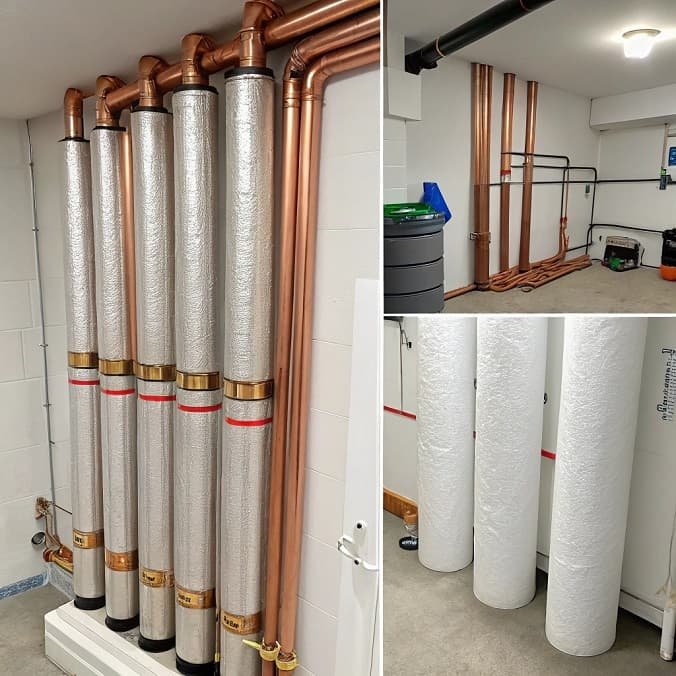
Types de matériaux d'isolation
Plusieurs matériaux conviennent aux tuyaux en cuivre isolant, chacun avec des propriétés distinctes:
- Fibre de verre: Fabriqué à partir de brins de verre tissés, Il offre une excellente résistance thermique et est résistant au feu, Le rendre idéal pour les systèmes d'eau chaude. Il est disponible en tubes et enveloppements, Bien que la manipulation puisse provoquer une irritation en raison des fibres de verre. Le coût va de $0.30 pour $1.50 par pied linéaire (Les avantages et les inconvénients du haut 5 Meilleures options d'isolation des tuyaux à domicile).
- Mousse (Polyéthylène, Caoutchouc): Flexible et facile à installer, L'isolation en mousse est conviviale, avec les coûts de $0.20 pour $1.35 par pied linéaire. La mousse en polyéthylène est résistante à l'humidité, tandis que la mousse en caoutchouc est résistante au moule et convient aux tuyaux chauds et froids. Cependant, La mousse peut être moins efficace pour les tuyaux extrêmement chauds.
- Isolation à cellules fermées: Fournit des performances thermiques supérieures et une résistance à la vapeur d'eau, Souvent utilisé dans les applications à haute efficacité. Il est flexible et facile à installer, Semblable à la mousse.
- Autres matériaux: La laine minérale et l'aérogel sont moins courants mais peuvent être utilisés pour des applications spécifiques à haute température ou industrielle, Offrir des options supplémentaires en fonction des besoins.
Choisir le bon matériau dépend du but du tuyau (eau chaude ou froide), emplacement (intérieur, Extérieur, Espaces inconditionnés), et les contraintes budgétaires. Par exemple, La fibre de verre est préférée pour les conduites d'eau chaude dans des environnements à haute température, tandis que la mousse est souvent choisie pour les projets de bricolage en raison du coût et de la facilité d'utilisation.
Avantages des tuyaux en cuivre isolants
Les avantages sont multiformes, impactant à la fois l'efficacité opérationnelle et les coûts à long terme:
- Efficacité énergétique: L'isolation réduit la perte de chaleur, qui est particulièrement significatif pour les conduites d'eau chaude. Études, comme d'Umass Amherst (Serre & Floriculture: Isolation de tuyau: Une mesure d'économie d'énergie | Centre d'agriculture, Nourriture, Et l'environnement à UMass Amherst), estimer les économies annuelles de jusqu'à $3.72 par pied linéaire pour un tuyau de 2 pouces de diamètre, en fonction des coûts de carburant et des heures d'utilisation.
- Empêcher la congélation: Dans les climats froids, L'isolation maintient la température du tuyau au-dessus du gel, Empêcher les dommages. Ceci est crucial pour les tuyaux exposés dans des zones non chauffées comme les sous-sols ou les greniers.
- Réduction de la condensation: En gardant les tuyaux froids, L'isolation empêche l'humidité de la surface, Réduire les risques de moisissure et de corrosion, Surtout dans des environnements humides.
- Extension de la durée de vie des tuyaux: Les boucliers d'isolation des pipes à partir de balançoires de température et d'humidité, Réduire l'usure, qui peut prolonger la durée de vie des tuyaux en cuivre connus pour la durabilité.
- Économies de coûts: L'investissement initial dans l'isolation est souvent compensé par une réduction des factures d'énergie. Par exemple, Une installation de bricolage coûte $9.52 dans les matériaux peut économiser sur $10 annuellement, avec une période de récupération d'un an (Demandez à Pablo: Cela vaut-il vraiment la peine d'isoler mes tuyaux?).
Les avantages supplémentaires incluent la réduction du bruit de l'expansion et de la contraction des tuyaux, Conformité aux codes du bâtiment, et la durabilité environnementale due à une consommation d'énergie plus faible, Compte tenu de la recyclabilité du cuivre.
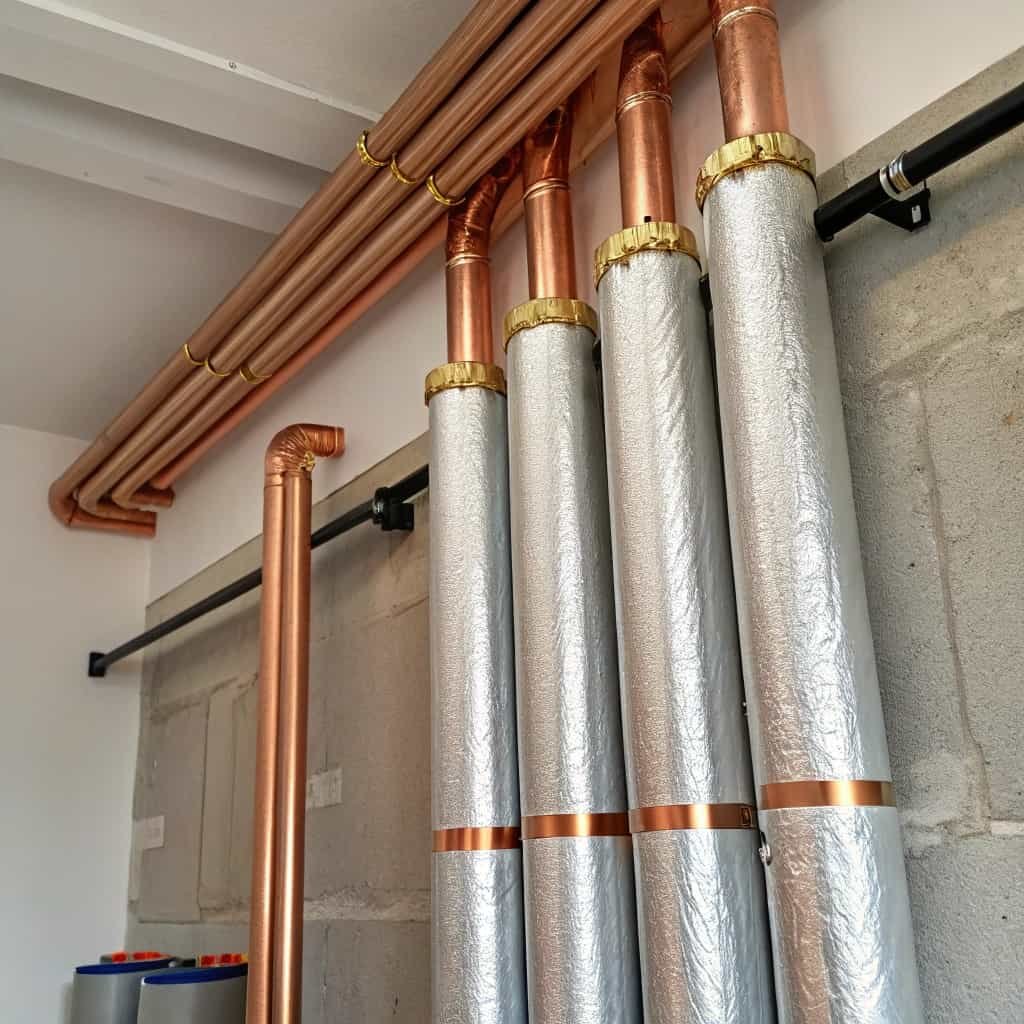
Comment choisir la bonne isolation
La sélection dépend de plusieurs facteurs:
- Pour les conduites d'eau chaude: Matériaux à forte résistance thermique, comme la fibre de verre ou la mousse à cellules fermées, sont recommandés pour minimiser la perte de chaleur. Ceux-ci sont idéaux pour les systèmes fonctionnant à des températures élevées, Comme 180 ° F, Comme on le voit dans les applications de chauffage.
- Pour les conduites d'eau froide: L'isolation en mousse ou en caoutchouc est préférée pour éviter la condensation, surtout dans les espaces humides ou climatisés. Ces matériaux offrent une bonne résistance à l'humidité, réduire le risque de moisissure.
- Considérations de localisation: Pour les tuyaux extérieurs, Choisissez des matériaux résistants aux intempéries comme la mousse en caoutchouc, qui peut résister à l'exposition aux UV et à la température extrêmes. Pour des espaces inconditionnés comme les greniers, isolation plus épaisse (par exemple., 1-épaisseur de pouces) est conseillé pour une meilleure protection contre le gel.
Le climat joue un rôle: Dans les régions plus froides, Une isolation plus épaisse est nécessaire, Dans les climats plus chauds, L'accent pourrait être mis sur le contrôle de la condensation. Les codes du bâtiment locaux peuvent également dicter des normes d'isolation minimales, en particulier pour l'efficacité énergétique.
Guide d'installation
Une installation appropriée garantit une efficacité maximale:
- Évaluer et préparer les tuyaux: Assurez-vous que les tuyaux sont propres et secs pour empêcher le piégeage de l'humidité sous l'isolation. Supprimer tout débris ou corrosion.
- Mesurer et couper l'isolation: Utilisez un ruban de mesure pour déterminer le diamètre et la longueur du tuyau. Coupez le matériau d'isolation pour s'adapter, Assurer un ajustement bien ajusté. Pour les tuyaux en cuivre, Notez que le diamètre extérieur (O.D.) est critique, Comme on le voit dans des guides comme Guide de dimensionnement des commandes faciles pour l'isolation des tuyaux en fibre de verre – Piping en cuivre et en fer.
- Envelopper l'isolation: Enveloppez l'isolation autour du tuyau, Assurer aucune lacune. Pour les tubes pré-fendus, Aligner la couture face vers le bas.
- Sécuriser avec l'adhésif ou la bande: Utiliser du ruban adhésif, ruban d'isolation, ou adhésif pour sécuriser l'isolation, Appliquer chaque pied ou deux pour la stabilité.
- Manipuler les virages et les articulations: Utilisez des sections flexibles ou faites des coupes inclinées pour les virages, Assurer une couverture continue. Fixer des joints avec du ruban adhésif supplémentaire pour éviter la perte de chaleur.
Les outils et les matériaux nécessaires incluent un couteau utilitaire, mètre à ruban, ruban d'isolation, et le matériau d'isolation choisi. Une inspection régulière après l'installation est recommandée pour vérifier l'usure ou les dommages.
Erreurs courantes et comment les éviter
Plusieurs pièges peuvent réduire l'efficacité:
- Scellage incorrect: Ne pas sceller les coutures peut permettre une entrée d'humidité, conduisant à la corrosion. Utilisez des membranes résistantes à la vapeur et assurez-vous des joints serrés.
- Mauvaise sélection des matériaux: L'utilisation de mousse pour des tuyaux extrêmement chauds peut dégrader le matériau, réduire l'efficacité. Faites toujours correspondre les cotes du matériau aux températures.
- Négliger les virages et les articulations: Ces zones peuvent être des points de perte de chaleur s'ils ne sont pas isolés correctement. Utilisez des raccords spéciaux ou de l'isolation coupée pour s'adapter étroitement.
Éviter ces erreurs implique une planification minutieuse, Sélection du bon matériau, et les directives d'installation suivantes, comme ceux de Comment installer une isolation de tuyau en cuivre.
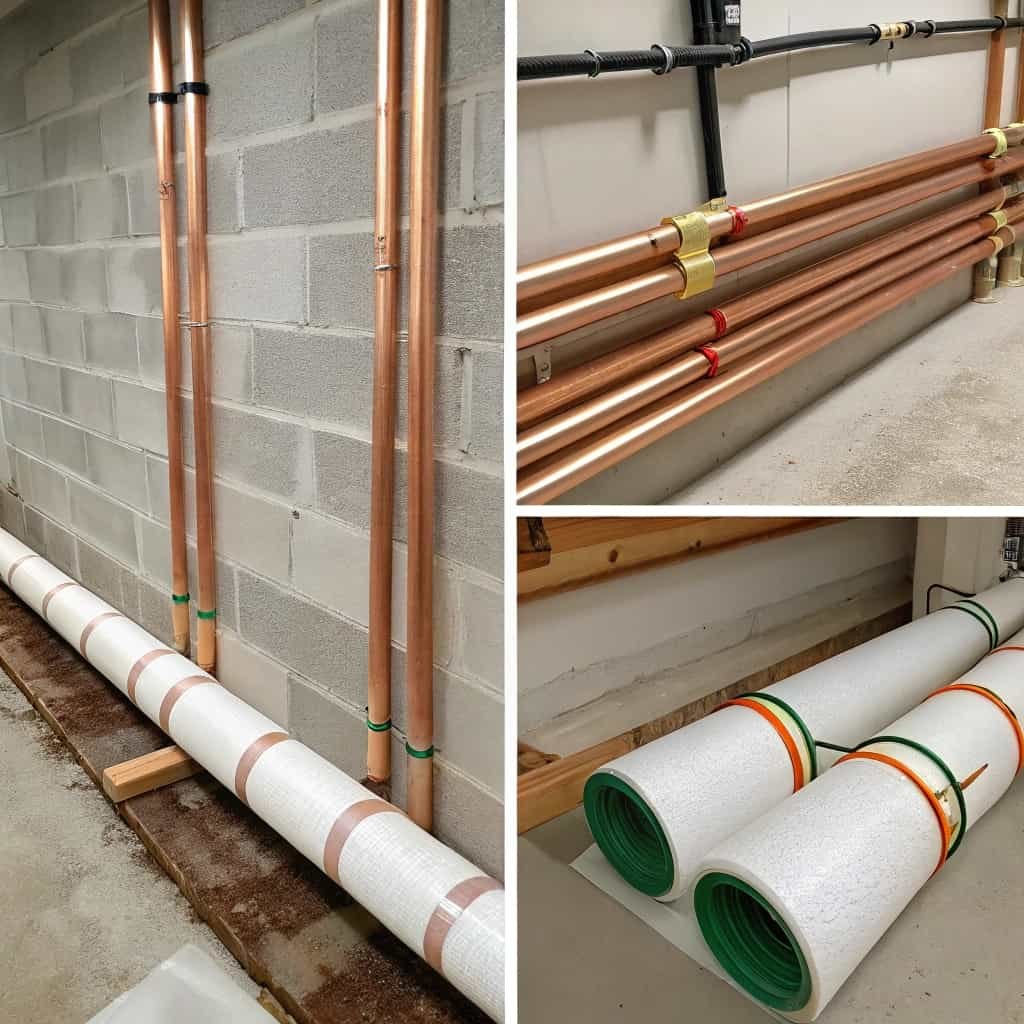
Entretien et dépannage
Assurer l'efficacité à long terme:
- Inspection régulière: Vérifiez l'isolation pour la fissuration, humidité, ou porter, en particulier dans les zones exposées. Des contrôles annuels sont recommandés.
- Manipuler l'isolation endommagée: Remplacez rapidement les sections endommagées pour maintenir les performances thermiques. Assurez-vous que la nouvelle isolation est compatible avec le matériau existant.
- Problèmes de fuite ou de corrosion: Inspecter les fuites à l'aide de vérifications visuelles, test de pression, ou méthodes acoustiques. Aborder la corrosion en ajustant le pH de l'eau, tuyaux de nettoyage, ou appliquer des revêtements protecteurs.
Le dépannage implique d'identifier les problèmes tôt, comme l'usage des facteurs environnementaux, et en s'adressant pour éviter la perte d'énergie ou les dommages aux tuyaux.
FAQ et réponses exactes
Basé sur les préoccupations communes des forums et des articles, Voici les principales questions et leurs réponses exactes:
| Question | Réponse exacte |
|---|---|
| Devrais-je isoler mes tuyaux en cuivre? | Oui, Surtout pour les économies d'énergie, protection contre le gel, et réduction de la condensation, Mais évaluer la configuration. |
| Quel type d'isolation convient le mieux aux tuyaux en cuivre? | Eau chaude: Mousse en fibre de verre ou à haute température; Eau froide: Mousse ou caoutchouc pour éviter la condensation. |
| Combien ça coûte? | Les coûts varient de 0,20 $ à 1,50 $ par pied linéaire, avec des économies de bricolage compensant les coûts dans un an. |
| Quelles sont les économies d'énergie? | Les économies varient; par exemple., Jusqu'à 3,72 $ / pied linéaire par an pour les tuyaux de 2 pouces, en fonction des coûts de carburant. |
| Comment installer correctement l'isolation des tuyaux? | Tuyaux propres, Mesurer et couper l'isolation, envelopper, sécuriser avec du ruban adhésif, Couvrir les virages et les articulations. |
| L'isolation affecte-t-elle le tuyau’Performance s? | L'isolation appropriée améliore les performances en maintenant la température; Une mauvaise installation peut piéger l'humidité, risquer la corrosion. |
| Y a-t-il un risque de dommages avec l'isolation? | Oui, Si non installé correctement, il peut piéger l'humidité, conduisant à la corrosion; Assurer un scellage approprié. |
| Quelle est l'analyse coûts-avantages? | Coût initial (par exemple., $9.52 pour le bricolage) contre. économies ($8- 12 $ / an), Souvent avec une récupération d'un an. |
Ces réponses répondent aux principales préoccupations, Fournir des conseils précis aux utilisateurs.
Considérations supplémentaires
Alors que l'isolation est généralement bénéfique, il y a des scénarios où cela pourrait ne pas en valoir la peine:
- Dans des espaces bien isolés: Si les tuyaux sont déjà dans un chaud, zone isolée, La perte de chaleur peut être minime, Rendre l'isolation moins rentable.
- Tuyaux courts: Pour des distances très courtes, L'énergie économisée pourrait ne pas justifier le coût.
- Inconvénients potentiels: Alors que l'isolation est généralement bénéfique, Il existe un certain débat sur la question de savoir si elle peut augmenter la perte de chaleur dans certains scénarios en raison de la conduction par l'isolation, surtout si ce n'est pas installé correctement. Cela met en évidence l'importance d'un bon choix de matériaux et d'une installation.
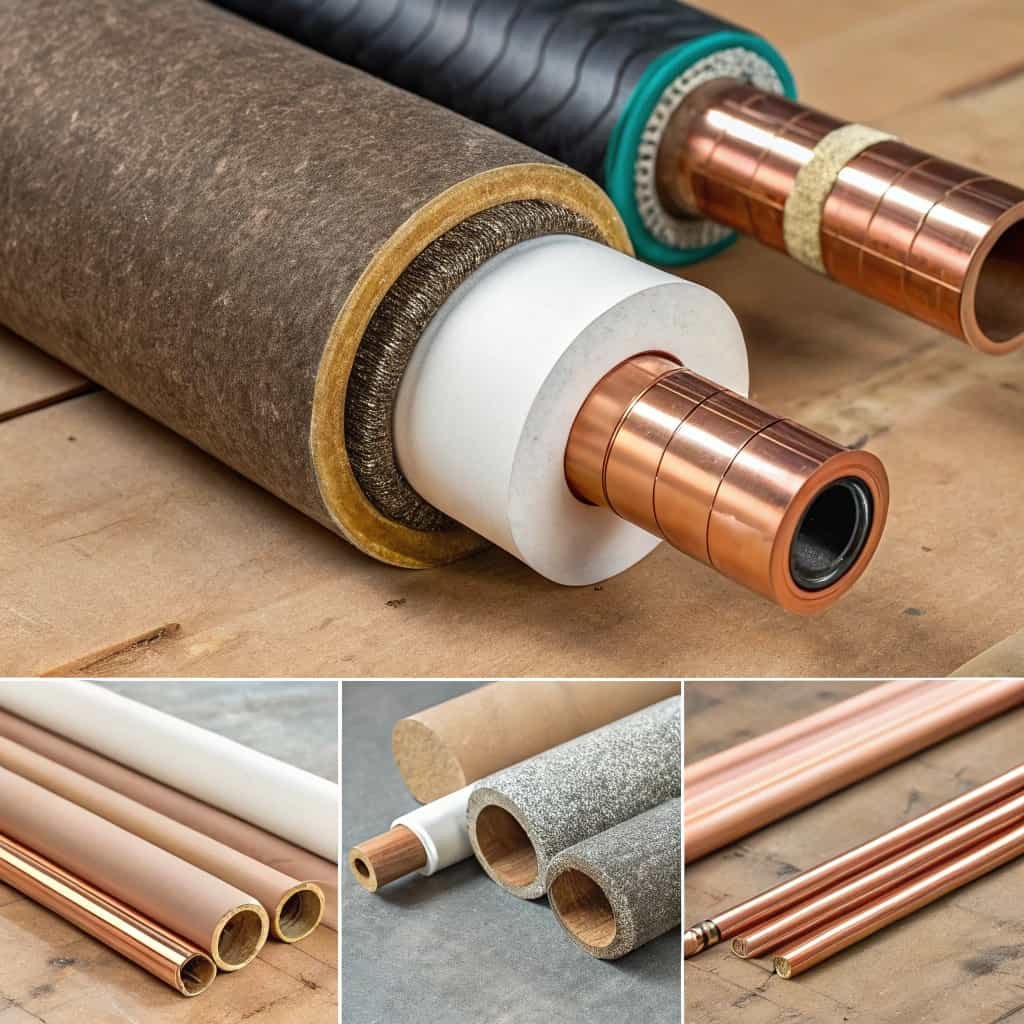
Conclusion
L'isolation des tuyaux en cuivre est une solution pratique et rentable pour les propriétaires ou les entreprises qui cherchent à stimuler leur système de plomberie’S Efficacité et durabilité. En minimisant la perte de chaleur, Empêcher la congélation, et réduire la condensation, Il permets non seulement d'économiser de l'énergie mais réduit également les coûts. Avec diverses options d'isolation et étapes d'installation simples disponibles, C'est une mise à niveau accessible pour les amateurs de bricolage et toute personne visant à améliorer leur efficacité énergétique. Investir dans l'isolation des tuyaux en cuivre est un choix intelligent qui est payant à la fois dans le confort et les économies.
Tout commentaire?
Bienvenue laisser un message ou reposter.



